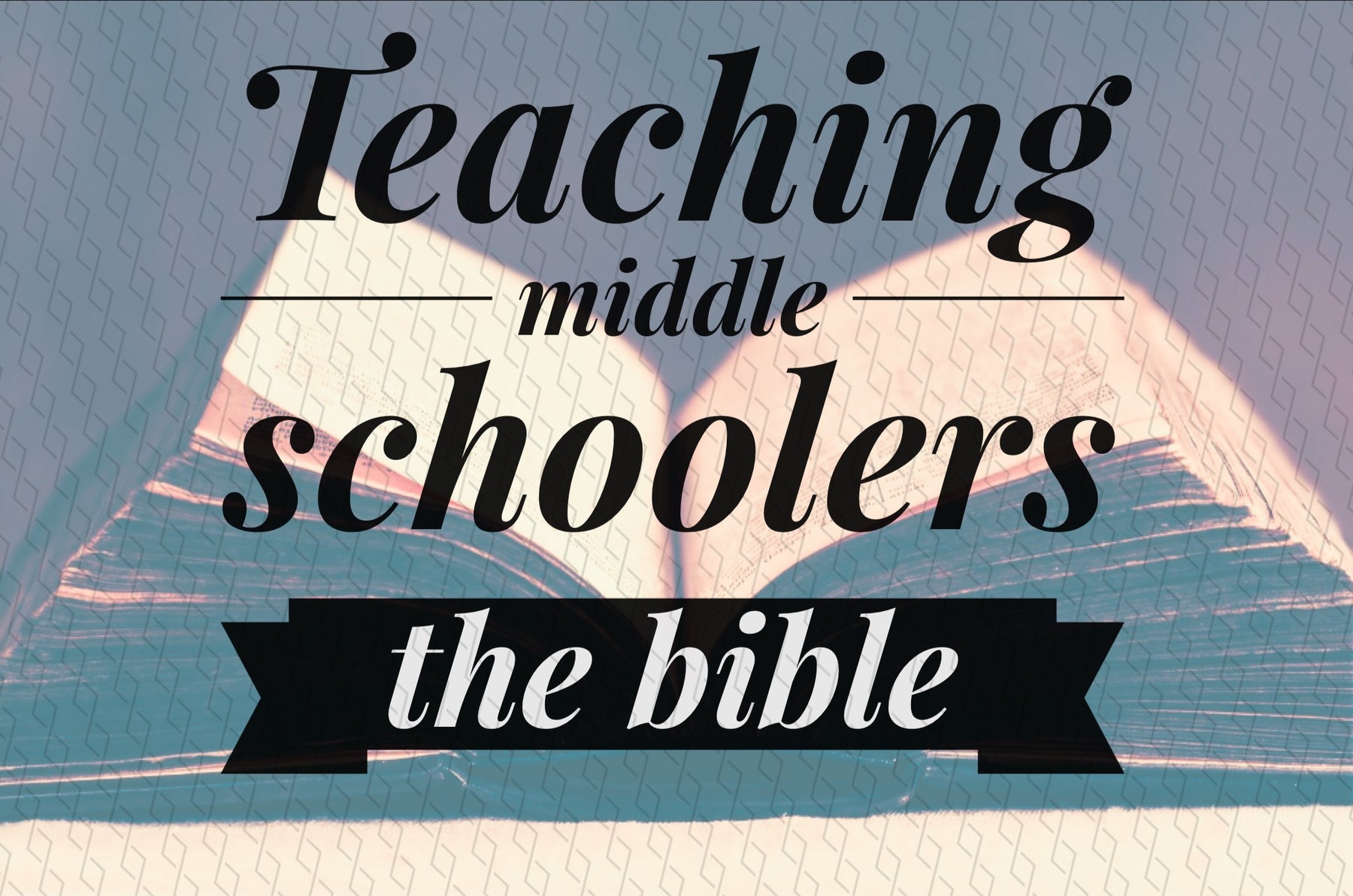
3 Tips For Teaching The Bible To Middle Schoolers
This year I’m teaching 7th graders on Sunday mornings at our church. This is significant because I’ve never taught this age group before; I’ve always taught senior high. And so going into the new ministry year, I was much more aware than I would normally be about how I was going to approach teaching the Bible. I wanted to make extra sure that I was prepared to open up Scripture to them in a way that was engaging and transformative in an age-appropriate way.
I decided to focus on accomplishing three main goals in every lesson.
I didn’t reinvent the wheel. It’s not rocket science. In fact, it’s pretty basic. But it’s a simple guideline, one that allows for a lot of flexibility, that has helped me make sure I am giving these young teenagers concrete information while still making the Bible come alive.
Here’s the three main things I look to accomplish in every Bible study.
Reinforce The Story of Scripture
I want to make sure that this is the year these students grasp the narrative of the Bible. I want to make sure they don’t think of the Bible as a random collection of stories mixed in with verses here and there that help us know what not to do. And so I am making sure I take the time to place what we’re studying in the context of the Bible’s big-picture narrative.
How do I do this? The first week I taught we were in the Gospels. I took the first five minutes and drew a timeline on the board that started with creation and hit all the major highpoints in the story of the Bible from Creation until Matthew’s Gospel. I did it with a lot of energy and a ton of interaction. (I was a little surprised at how well the students could help me fill in the gaps. It’s going to be a good year.) I won’t do the full timeline every week, but I will reference it, and I will place every lesson within the greater context of the story.
Wrap Up With "The One Main Thing"
I taught on the transfiguration last week. I took a pretty exegetical approach, taking the passage almost verse by verse. I was very interactive, as always. The students helped me look at the historical context. We talked through the details of Peter’s response. Even did a Greek word study. It was good Bible study. But as we ended, I made sure I wrote the phrase “One Main Thing” on the board. I then wrote the word “IDENTITY.” I wrapped up the Bible teaching time by showing them that this passage is all about the identity of Jesus.
I expounded on it a bit more, but the point is this: after some good interaction and learning, I made sure I landed the plane with one main idea so they would have no doubt what the key focus was on. I wrote it on the board. In big letters. It was concrete. It said, “when you leave here, remember this thing.”
Leave Them With One Main Takeaway
I teach in a large-group format where we break students down into small groups for the last 15 minutes of our meeting time. This is where application of the lesson takes place in dialogue with a small group leader. I made sure to equip our small group leaders with questions that flowed out of one main application point (I called it the One Takeaway). My Takeaway was something like this: “Because of Jesus’ identity, because of who He is, He can’t just be one part of our lives. As God’s only Son, as the Messiah, as Savior, He should be at the very center of our lives.” The small group interaction focused on fleshing out this one Takeaway.
Showing students the Big Picture story of Scripture, driving home the One Main Thing, and leaving them with a key Takeaway. It’s not a bad guideline for teaching younger teenagers.
The key is to define these, in solid terms, helping students make the right connections and challenging them to be changed by the Truth.
What do you think? What would you add or do differently?




Leave a comment